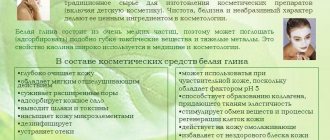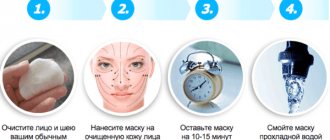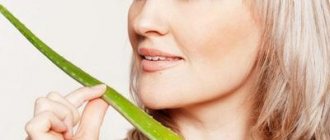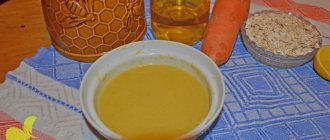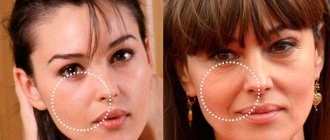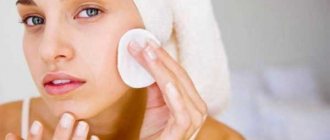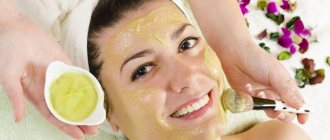The ability of living organisms to renew healthy and restore damaged tissue is called regeneration. For the harmonious development and proper functioning of the human body, a constant process of such changes at the cellular level is necessary. The outer layer of human skin (epidermis) is in a state of continuous renewal, thereby providing favorable conditions for the normal functioning of human internal organs, performing protective and aesthetic functions.
Types of regeneration
There are two types of skin regeneration:
- Physiological is a natural process of tissue renewal that occurs throughout the entire period of human life. Along with the restoration of the skin, this type of regenerative function also includes such manifestations of the body’s vital activity as the regrowth of hair and nails.
- Reparative is a restoration process resulting from any mechanical damage to the skin. When the integrity of the skin is damaged as a result of bruises, cuts, scratches, burns, acne, the affected area is formed from new cells that begin to multiply quickly, restoring damaged tissue.
Cyclic mechanism of cell renewal
Skin cells originate in the inner layers of the skin and, gradually moving towards the outer layers, eventually end up on the surface. In their place, new ones are formed, which, in turn, move in a similar way. After some time, old epidermal cells die and imperceptibly peel off, being replaced by young ones. This continuous process has a certain cyclicity. The period of time from the moment a cell is born to its natural death is called the skin regeneration cycle.
Periods of renewal, depending on the speed of recovery reactions, may vary in each specific case, since the mechanisms of cell regeneration in different people have their own characteristics, which are directly influenced by the following factors:
- genetic predisposition;
- age;
- nutrition;
- care;
- environmental conditions.
The genetic factor, of course, plays a big role in this process, but on the other side of the scale there will always be inevitable age-related changes, environmental conditions, as well as the lifestyle that a person leads, including his diet, habits, ability to monitor his health and appearance.
The cyclicity of regenerative functions directly depends on a person’s age, but since its nature is simultaneously determined by the other factors listed above, this value cannot be equivalent for all representatives of the same age. However, there are approximate data on the duration of the regeneration period, depending on age categories. It can be stated that the approximate speed of the regenerative process is:
- up to 25 years - 28 days;
- 25−35 years—29 days;
- 35−45 years—30−31 days;
- 45−55 years - 32 days;
- after 60 years - up to 2-3 months, after which a period of stabilization begins, when the skin loses moisture, loses firmness and elasticity, and becomes wrinkled.
The rest of the listed conditions, such as nutrition, care, environment, are no less important for recovery processes and, if necessary, are subject to adjustment in order to improve health and prolong youth.
How does the epidermis renew itself?
How the epidermis is renewed
It can be considered that the “grandmothers” of epidermal cells are stem cells. They, like the “mother” cells, are located on the basement membrane (the deepest layer of the epidermis). “Moms” are capable of multiple divisions, forming germ cells. The germ cells sit on the basement membrane until it is time to “grow up.” Then some of the daughter cells break away from the basement membrane and move to the periphery, growing up and accumulating special high-strength proteins in the process of growing up: various types of keratin, filaggrin, involucrin, keratolinin, etc. A feature of these proteins is their significant strength and resistance to mechanical and chemical influences. Therefore, the process of “growing up” of a keratinocyte is accompanied by an increase in its strength, the so-called keratinization (keratinization) .
A dead keratinocyte consists almost entirely of keratin, which is why the dead cells were even called “horny” cells, they are so strong. Horny scales form a highly durable stratum corneum, which, due to its mechanical strength, is an important part of the protective epidermal barrier.
The stages of keratinocyte development are so organized by nature that layers , each of which contains cells at a certain stage of development. There are four of them (except for the skin of the palms and soles, where there are 5 layers):
- Basal layer. Stem cells, mother cells and germ cells are found here.
- The stratum spinosum is a layer of cells that have entered the path of development. They lose the ability to share. Granules of phospholipids and ceramides begin to appear in the cells of this layer; amino acids and peptides begin to turn into keratin protein. The contents of the granules begin to be released into the intercellular space. This is how the lipid barrier of the skin is formed - “cement”, which holds the epidermal cells together, preventing excess moisture loss and the penetration of microorganisms through the skin.
- Granular layer. The granules (grains) of this layer contain proteins (profilaggrin), lipids (phospholipids, ceramides) and enzymes necessary to maintain the epidermal barrier. Filaggrin is formed from profilaggrin, which, in interaction with keratin, forms the rigid “skeleton” of the cell.
- As keratin accumulates, the cell nucleus is destroyed and the cell dies. The horny (upper) layer of the epidermis is represented by dead cells - densely packed flat horny scales. The horn cells fit tightly to each other and are connected by special “locks”. In the intercellular space of the stratum corneum there is a large amount of lipids (cholesterol, ceramides and fatty acids) that form the lipid barrier of the skin. Filaggrin, having fulfilled its functions, breaks down into amino acids, which are the most important components of the natural moisturizing factor.
Thus, keratinization is a consistent, layer-by-layer process of keratinization of epidermal cells, which occurs with the formation of substances that are part of the lipid barrier of the skin and a natural moisturizing factor and protect the skin from environmental influences and excess moisture loss.
Keratinization of the epidermis
Dead cells are removed from the surface of the skin through their natural exfoliation (desquamation) , which occurs thanks to enzymes that destroy the compounds that bind the horny scales to each other, in particular, chymotrypsin. The peculiarity of these enzymes is their activity in the acidic environment of the hydrolipidic mantle of the skin and the change in activity with increasing pH. In addition, chymotrypsin is active only in the presence of water. That is, its ability to perform its functions of destroying the “locks” between horny cells depends on the degree of skin hydration.
The conducted studies show the relationship between the moisture content in the atmospheric air and the rate of desquamation of horny scales. At air humidity of 55%, the rate of desquamation of horn cells decreases by 40%, and at 44% humidity - by 75%. This indicates the importance of skin hydration - only with good hydration can one ensure a sufficient rate of desquamation of horny scales for skin health and, accordingly, a rate of skin renewal.
The main reasons for poor regeneration
Sometimes the skin loses its ability to recover normally, and the rate of regeneration decreases, regardless of age. The reason for this may be the following factors:
- weakened immunity;
- presence of chronic diseases;
- infections;
- regular stress;
- insufficient rest, overwork;
- lack of adequate nutrition;
- lack of physical activity;
- improper skin care;
- periods of hormonal changes in the body;
- unfavorable environmental conditions.
Main functions of the skin:
- Respiratory function. It lies in the fact that the skin is able to absorb a certain amount of oxygen and, accordingly, release carbon dioxide. This function is provided by its porous structure.
- Immune. This is the capture, processing, and also transport of specific antigens to the site of tissue damage by foreign bodies, with the ultimate goal of developing an immune response.
- Protective. Thanks to it, the body is to a certain extent protected from foreign microorganisms, mechanical, thermal, chemical injuries, hypothermia or overheating, ingress of water, and so on.
- Thermoregulatory. As already noted, the skin is the guarantor of maintaining optimal body temperature balance. It retains heat in it, and also promotes increased heat transfer when the body overheats (this is also possible due to the sweat glands).
- Receptor function. There are thousands of nerve endings on its surface. And thanks to them, a person can feel touch, cold or heat, external microtrauma, and so on.
- Blood deposition function. This vital “liquid” in the total mass of the skin can contain approximately 1 liter (in children - 2-3 times less, depending on age and body weight).
- Exchange. Toxins, excess moisture, salt and other substances are removed through the skin. This function also helps maintain a stable water-salt balance.
Each of these functions is important. But, all of them, taken together, ensure the normal functioning of the whole organism. This is extremely important.
What promotes skin restoration
In order to effectively resist negative factors and slow down skin aging, it is necessary to stimulate the process of cell regeneration. For this purpose, various means and methods are used. The following will help solve this problem:
- healthy food products;
- medications;
- natural remedies;
- anti-aging face masks;
- cosmetic procedures.
The right diet
If the regenerative processes of the skin are disrupted and the first signs of aging appear, it is necessary, first of all, to pay attention to the daily diet. It should include products containing vitamins A, C, D, E and B vitamins, which promote the formation of new cells and rejuvenation of the body. The following food products should prevail on the menu:
- Fish . Fatty varieties are ideal: salmon, mackerel, sardine, herring, rich not only in vitamins A, C, D, E, but also in Omega-3 acids. Along with the fact that this product is easily digestible, it has a good effect on the appearance of the skin, improving local blood circulation in the tissues. A fish dish should be served at least once a week.
- Dairy products . Cottage cheese, kefir, sour cream, cheese have pronounced stimulating properties, as they contain vitamin A and selenium. Cottage cheese and sour cream can also be used as masks.
- Cereals and whole grain bread . These products, rich in B vitamins, help normalize the gastrointestinal tract, improve metabolic processes, and cleanse the body of waste and toxins, which has a beneficial effect on the condition of the skin.
- Vegetables . Contain a large amount of vitamins. Carrots, which contain carotene and retinol - substances that accelerate regenerative processes, are especially useful. Don't forget about tomatoes and beets, which will also help keep your skin young and beautiful.
- Fruits and berries . Being an irreplaceable source of vitamin C, they effectively stimulate cell division. Additionally, these products boost collagen production, leaving your skin firm and smooth. The most useful in this regard are pomegranate, avocado, kiwi, grapefruit, orange, and currant.
- Nuts . They contain a large amount of vitamin E, which helps keep the skin fresh and is rightly called the “vitamin of youth”. Nuts also contain another beneficial substance that provides a beautiful appearance - coenzyme Q10. Therefore, you should consume them as often as possible, especially walnuts, hazelnuts, almonds, and cashews.
- Green tea . This drink has pronounced antioxidant properties. With its regular use, the body is freed from toxins, due to which the condition of the skin noticeably improves.
Medications
To treat skin damaged as a result of injury, special medications are used for both internal and external use, promoting accelerated tissue regeneration and rapid healing.
Immunomodulators will help to significantly increase the body's regenerative abilities during the recovery period . These include drugs such as levamisole, thymalin and pyrogenal. When using them, regenerative processes proceed several times faster.
To improve the blood supply to damaged areas of the skin and their rapid healing, the drug Actovegin is widely used, which is available in the form of tablets, an injection solution, and also as an ointment and gel for external use.
Attention! In order to effectively treat and eliminate the risk of adverse reactions, medications must be used strictly as prescribed and under the supervision of a physician!
In addition to the above, other medications can be prescribed to stimulate recovery processes, for example, steroidal and non-steroidal anabolic drugs, biogenic stimulants, vitamin complexes, etc.
Along with taking medications in the form of tablets and injections, direct treatment of the wound is an essential part of the treatment. For this purpose, ointments and creams are used for skin regeneration, which have a local antiseptic and wound-healing effect. The most popular means are:
- Levomekol . This ointment is widely used to treat purulent wounds, cuts, burns, bedsores and even eczema.
- Solcoseryl . This product is made from calf blood, which minimizes the occurrence of any allergic reactions, since the drug is easily accepted by the human immune system. The ointment improves metabolic processes, helping to enrich skin cells with oxygen, activates regenerative functions, and increases collagen synthesis. It is used to treat severe burns, trophic ulcers, and bedsores.
- Actovegin . For external use it is available in the form of ointment and gel. Like solcoseryl, the drug effectively accelerates regeneration processes and can be used to treat deep skin lesions. The scope of application covers a wide range of diseases, including venous insufficiency and oncology.
- Panthenol . It is made in the form of a spray. The strong regenerative effect of the drug is due to the properties of pantothenic acid included in its composition. The product takes a leading position in the treatment of various wounds and burns.
- Rescuer . This cream, in addition to its restorative effect, has a strong antibacterial effect. Widely used in pediatric practice, performing the function of an “ambulance” for injuries of any origin.
Natural remedies
Natural substances that have the ability to stimulate regenerative skin processes will also help improve the condition of the skin and renew its outer layer. The most effective natural stimulants include:
- Sea buckthorn oil , which contains vitamins A and E, essential for regeneration, and also has antioxidant properties. This product relieves inflammation, promotes rapid wound healing, and moisturizes the skin well.
- Jojoba oil , promoting rapid cell regeneration, has a nourishing and moisturizing effect on the skin, giving it firmness and elasticity. In addition, the product protects the skin from the harmful effects of ultraviolet rays.
- Badyaga improves blood circulation in tissues, accelerates wound healing, and helps get rid of acne. Possessing excellent regenerative properties, this natural component promotes the resorption of subcutaneous seals and scar formations. Ointments and creams are made based on this product.
Anti-aging masks
How to restore facial skin? At home, for this purpose, you can use special masks, which should contain substances with antioxidant properties, as well as microelements that prevent the destruction of the cell membrane and promote the production of collagen and elastin. The masks are applied to previously cleansed skin, left for at least 15 minutes and washed off first with warm and then cold water.
Clay mask . To prepare it you will need one tablespoon of blue clay and two tablespoons of gooseberries. The berries should be mashed well and mixed with clay. Apply the resulting mixture to the face, avoiding the eye and lip area. Wash off the mask after 15 minutes.
Gelatin mask . Prepared from half a glass of freshly squeezed fruit or berry juice and one tablespoon of gelatin. The mixture must be boiled and simmered over low heat until the crystals are completely dissolved. Apply the cooled mask for 15-20 minutes.
Herbal mask . It has not only a regenerating, but also a pronounced anti-inflammatory and nutritional effect. For preparation, crushed leaves of currant, strawberry, plantain, taken in equal parts, and one egg yolk are used. Mix the ingredients well and apply the resulting mixture for 15-20 minutes.
Cosmetology procedures
To improve the condition of the skin and its intensive rejuvenation, you can use the services of professional cosmetologists who will correctly assess the existing problems and offer the most effective methods for solving them. In beauty salons, procedures are carried out to promote maximum restoration and renewal of the skin. Such events include:
- Peeling . It is a deep cleansing of the face, as a result of which accelerated regeneration mechanisms are launched. To carry out the procedure, various methods are used: mechanical, chemical, diamond grinding, etc. Professional peeling is recommended from the age of thirty.
- Mesotherapy . It is carried out using special microneedles, with the help of which medicinal solutions are injected under the skin. These substances activate metabolic processes, improve tissue regeneration, promoting their rejuvenation. This procedure is recommended for aging skin.
- Radio wave lifting . Produced by a device that emits radio waves. The impact can be carried out with varying intensity. During this procedure, rejuvenation processes are actively stimulated.
There are a large number of ways to speed up skin regeneration, but we should not forget that solving this problem requires an integrated approach, including not only the use of stimulating techniques and means, but also the organization of a healthy lifestyle and the elimination of bad habits. Only with an objective assessment of the situation and a firm determination to make the necessary efforts will the desired result be achieved, which will last for a long time.
What determines the rate of skin renewal?
What determines the rate of skin renewal
? It is known that natural mechanisms operate on the principle of achieving balance and maximum efficiency. Nature has provided everything to ensure that the stratum corneum of the epidermis has an optimal thickness to perform protective functions. The balance between keratinization and desquamation is one of the most important mechanisms in the formation of the epidermal barrier.
The optimal thickness of the stratum corneum is regulated by synchronizing the processes of cell division in the basal layer and the rate of natural exfoliation of horny scales. The higher the intensity of cell reproduction, the lower the strength of “cross-linking” of horny scales, the faster the exfoliation of dead cells occurs. And vice versa - the lower the intensity of cell division in the basal layer, the slower natural exfoliation will occur.
Cell division activity is maximum at night and is regulated by:
- hormones;
- growth factors;
- special substances (keylons) that protect the skin from excessive division of cells in the basal layer, etc.
The intensity of natural skin exfoliation depends on:
- genetic characteristics of the organism;
- hormonal status;
- activity of epidermal enzymes;
- pH level of the skin (enzymes that provide exfoliation of horny scales can only act in an acidic environment);
- pathogenic microorganisms present on the skin, mites and enzymes produced by them;
- structural components of the skin lipid barrier (some lipids can reduce enzyme activity);
- products applied to the skin;
- degree of skin moisture, etc.

